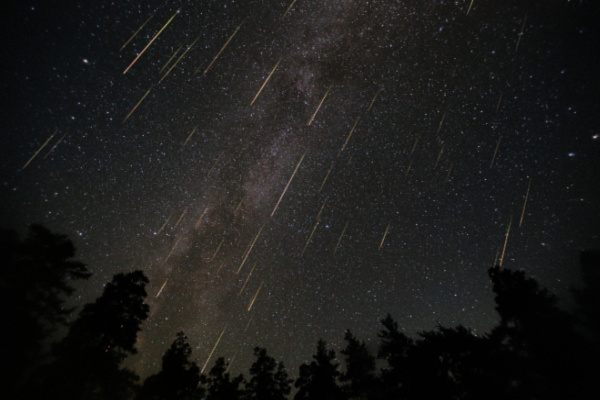There are not many days left before 2023 comes to an end, but there is still one more major astronomical event that is about to put on a dazzling display in the night sky — and folks who miss the show may have to wait until the spring for the next chance to see another event like it.
As AccuWeather reports, the Geminid meteor shower is expected to peak tonight, December 13, into the early morning of Thursday, December 14, an alluring event for stargazers of all ages.
More than 100 meteors per hour can be counted from dark areas, with reports in recent years of hourly rates briefly climbing as high as 150 per hour. Onlookers who are closer to towns and cities with light pollution may not be able to see the Geminids on full display but should still be able to see more shooting stars than many other meteor showers throughout the year.
It’s not just the abundance of meteors that makes the Geminids a must-see event, but also the time of night when people can see shooting stars streak through the sky.
You can view Geminids just after Nightfall
Most major meteor showers can only be seen during the second half of the night, but people who step outside on Wednesday evening may begin to see meteors not long after nightfall. “This is the one major shower that provides good activity prior to midnight,” the American Meteor Society explained on its website.
Because meteors will begin to appear shortly after nightfall, the Geminids are great for younger stargazers who have never seen a shooting star, especially since it peaks on a school night.
The meteor shower will start slowly, with perhaps just a dozen or two shooting stars per hour early in the night. It will gradually build as the night transpires, with the frequency of meteors likely surpassing 100 per hour after midnight.
Excellent conditions are expected this year as the moon will not hinder observers. Next year, the Geminids will peak on the same night as a nearly full moon, with the moonlight washing out all but the brightest meteors. However, disruptive clouds could pose a problem for some onlookers this year.
Upcoming Meteor Showers
Two smaller meteor showers are predicted to peak in the coming weeks, starting with the Ursids on the night of Thursday, Dec. 21, into the early hours of Friday, Dec. 22. However, it only features five to 10 meteors per hour, a far cry from the mid-December Geminids.
The third night of 2024 will bring the peak of the Quadrantids with over 25 shooting stars per hour, but the short-lived event only lasts for around six hours, making it a challenge to view even if the weather cooperates.
Following the Quadrantids, the next moderate meteor shower will not occur until spring with the Lyrids in late April.
—
Photo Credit: Makarov Konstantin / Shutterstock.com
